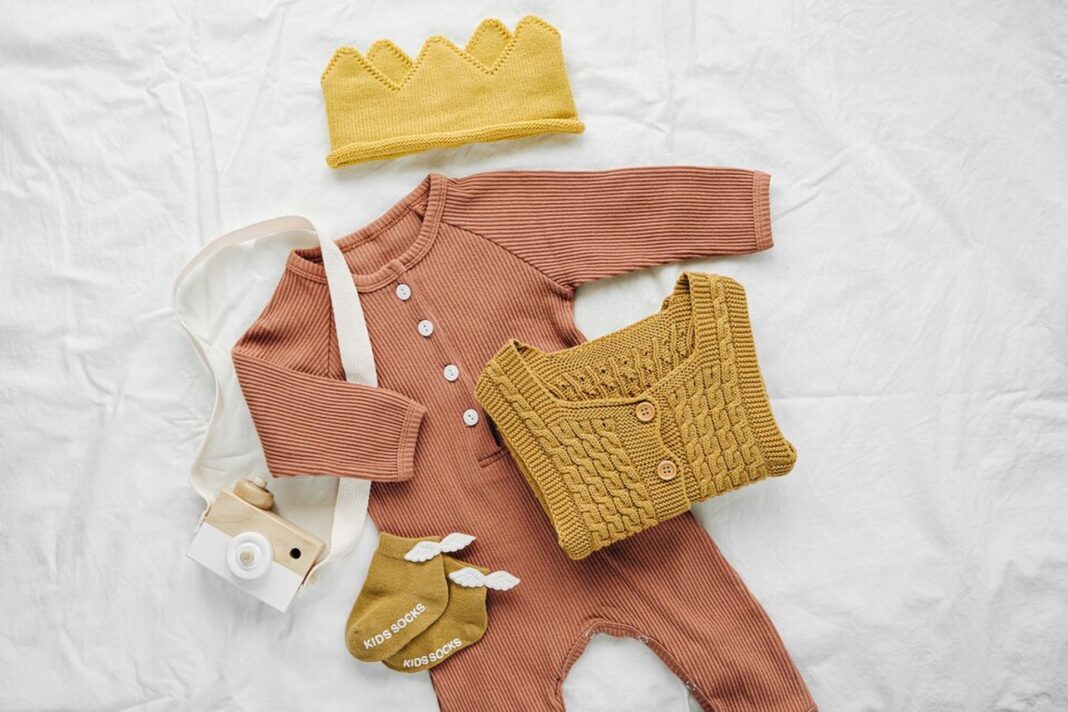The Importance Of Fit In Baby Clothing
The appropriate infant clothes fit is crucial. Fitted garments are comfortable and allow for mobility as babies develop. Poorly fitted garments may irritate or limit mobility. Babies can explore effortlessly with the right fit. Checking fabric and design stretch is helpful. Adjustable parts prolong usage.
A snug waistband without being too tight is great. Choose breathable warm garments for your infant. Layering makes modifications easier. Always consider dressing and changing easily. These chores are easier with buttoned or snapped clothes. Grow area is needed but avoid bulky objects.
Parents should also consider security. Avoid dangerous garments with lengthy strings or loose pieces. Soft tags and seams reduce irritation. Easy to wash baby clothes make life easier. Choose textiles that can be washed often. Always emphasize style and safety. Careful selection may achieve equilibrium.
Trendy Colors And Patterns For Your Little One
Fashion for infants may be fun and useful. Baby clothes have individuality with bright colors and amusing designs. Parents select colors based on mood or style. Pastel hues are quiet while bright colors stimulate. Polka dots stripes and flowers are fun.
Seasonality affects color choice. Spring and summer usually have softer colors. Deeper colors may be needed in autumn and winter. Seasonal patterns can spice up clothing. Prints celebrating holidays may enrich memorable moments. Parents may customize appearances by mixing colors and patterns.
Comfort is key when choosing stylish clothes. Clothes should be gentle on babies. Consider organic cotton or bamboo mixes for comfort. Trendy clothing may be comfy and stylish. Accessories may match colors or themes. Hats socks and shoes allow color mixing.
Budgeting For Baby Clothes Without Sacrificing Style
Baby outfits may be budgeted yet look good. Stretching your budget requires planning. Save a certain amount each month for baby clothes. This restricts expenditure and avoids excess. Inventory your baby occasion specific demands.
Sales and reductions provide trendy clothes. Check thrift shops and internet markets for gently used products. Many brands provide affordable end of season deals. Renting clothes via subscription may save money. Mixing and matching may produce several looks from fewer components.
Choose classic looks over trendy ones. Classic pieces are timeless and adaptable. Quality trumps quantity. Buying a few crucial components might be better than many inexpensive ones. Look for versatile outfits. Prioritize seasonal layering. Smart clothing choices are the key to stylish budgeting.
Accessorizing Your Baby Outfits
Accessories finish baby attire. Even plain clothes may be enhanced with accessories. You may express your originality and style. Fun and practical baby hats provide warmth and sun protection. Colorful patterned hats may be signatures.
Popular accessories include bows and headbands. These accessories may complement clothes or add color. Shoes albeit optional for newborns complement a style. Baby shoes may be stylish. Look for easy on easy off choices.
Layering cardigans and vests provides depth. Scarves are fashionable and warm. Comfortable and safe equipment is essential. Avoid choking dangers and dangerous products. Remember that simplicity frequently works best. Selecting one or two distinctive items is crucial.
Sustainable Baby Clothing Options
Baby clothes made from sustainable materials are beneficial. Parents care more about their clothes‘ environmental effects. Organic cotton and hemp are popular sustainable fabrics. Soft textiles are good for babies and the environment. Sustainability focused brands value quality and durability.
Used clothes are another great alternative. Used goods are available in thrift stores and online markets. This method eliminates waste and offers elegant alternatives. Eco friendly circular fashion reuses garments. Brands that employ ethical production improve the future.
Create a capsule outfit for your infant to save waste. Fewer mix and match parts assist. Consider durability while buying baby clothes. Comfort and style are not compromised by sustainable apparel. Awareness and decisions may greatly affect future generations.
Choosing Clothes For Different Seasons
Clothing for various seasons is crucial for newborns. Seasonal weather affects comfort and functionality. Lightweight textiles are vital in summer. Breathable cotton keeps newborns cool. Fall temps need warm layers. Multilayered clothing enables quick modifications.
Autumn requires flexible clothes. Soft sweaters and jeans work well. In transitional weather light coats assist. Caps and mittens keep out the cold. Shoes must also change with the seasons. Thick socks and insulated shoes are winter essentials.
Cross seasonal garments are useful. Think of adaptable things. Layering may change personal style. Keep textiles simple to clean particularly with infants‘ mess. Choose seasonal products carefully to simplify daily life.
What Are The Best Styles For Baby Girls Vs Baby Boys?
Bright colors and lively designs are common in baby girl styles. Favorites include ruffled and printed dresses. For utility combine soft skirts with leggings. Accessories like ribbons and headbands offer style. Parents generally choose floral motifs for daughters. This gives clothing a traditional femininity. Pastel hues are appreciated for their gentleness.
Baby boys love comfort. Soft shorts and easy to wear tops are popular. Overalls are fashionable and practical. Bright colors and nautical motifs are popular among parents. Checks and stripes are also popular. Gender neutral earthy tones are also trendy. Many parents choose unconventional ways. Both styles may be stylish and exciting.
How Often Should I Update My Baby Wardrobe?
Baby outfits require frequent changes owing to fast development. Most babies outgrow garments every several months. Quarterly updates work depending on infant development. Record clothes sizes and wear. Replace worn out or ill fitting items first. Babies may need new clothes for important occasions.
Seasons might affect wardrobe demands. Fall and winter may need warmer textiles than spring and summer. Always maintain baby clothes. Regular upgrades keep a wardrobe fresh and useful. Choose versatile clothes for utility. Well coordinated infant clothing is beautiful and manageable.


